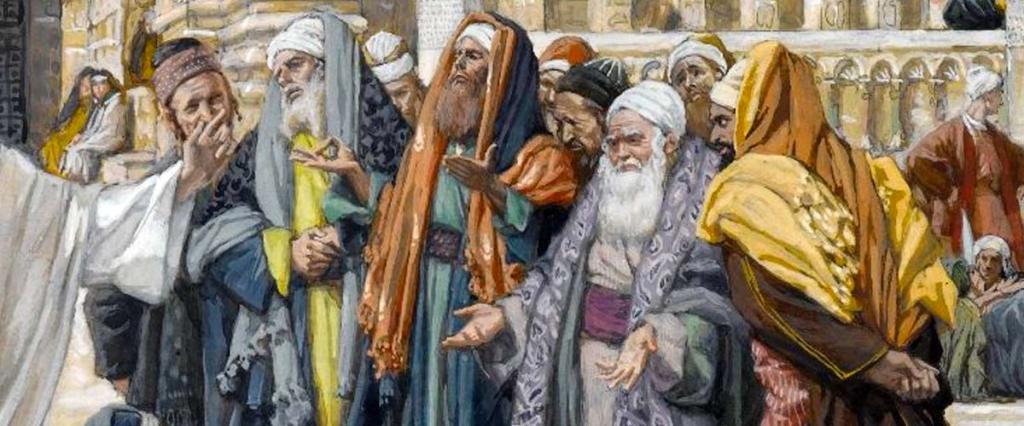
John 1:19-24 (ESV) And this is the testimony of John, when the Jews sent priests and Levites from Jerusalem to ask him, “Who are you?” 20 He confessed, and did not deny, but confessed, “I am not the Christ.” 21 And they asked him, “What then? Are you Elijah?” He said, “I am not.” “Are you the Prophet?” And he answered, “No.” 22 So they said to him, “Who are you? We need to give an answer to those who sent us. What do you say about yourself?” 23 He said, “I am the voice of one crying out in the wilderness, ‘Make straight the way of the Lord,’ as the prophet Isaiah said.” 24 (Now they had been sent from the Pharisees.)
There are a lot of Israelite groups mentioned in Scripture, so many that I catch myself asking “Who are these guys?” Here’s what I found.
The Pharisees were either included in the delegation from Jerusalem or were responsible for sending them to John. Verse 24 can be read either way in the Greek.
The name “Pharisee” means “Separated,” separated from the unrighteous whether heathens or Jews the Pharisees defined as unclean.
During the Hasmonean Dynasty (140-37 b.c.) when the Jews had taken back their country from the Greeks, many of the priests began to seek approval of the Hellenistic (Greek influenced) government rather than abiding by the Mosaic Law. As a result the priests separated into camps or parties. The first was the Sadducees who agreed with the idea of pleasing the political leadership. The other was the Pharisees who wanted to stand by the Law, at least the oral law they believed was handed down by Moses.
During this time, Queen Alexandria (Queen of Judea 76-67 b.c.) saw the division taking place and in the interest of peace gave leadership to the Pharisees. Over the next several decades, the Pharisees became so strong, they could hold kings and priests on trial.
The Sadducees in Jesus’ day sought to please Rome and were the leadership of the Sanhedrin, strangely enough..
The priests mentioned in John 1:19 are descended from Aaron. They have been the line of priests since Moses and were in charge of all the ceremonial rituals in the temple and of the maintenance of the ceremonial items. They were also considered advanced theologians of the Law.
The Levites mentioned in the verses above are the aids or assistants to the priests. They were descendants of Levi just as Aaron and Moses were, but their duties were to serve those descended directly from Aaron.
The only other place Levites and Pharisees are mentioned in the New Testament are in the parable of the Good Samaritan where both pass by the man in need (Luke 10:32).
Next we have Scribes mentioned in the New Testament. These were professional biblical scholars. The canon of the Old Testament had become so large, the need for men who would spend their entire lives studying and explaining the Law arose. So, these men became the Scribes.
Not mentioned in Scripture but also a major sect of Judaism at the time of our Lord’s earthly ministry were the Essenes. These were similar to the early Christian ascetics. They took a vow of poverty and excluded themselves pretty much from the world. Many lived in isolated communities within cities. Others went whole hog and moved out to the wilderness. The Essenes of Qumran are a good example of these. They isolated themselves in an area near the northeast corner of the Dead Sea and spent much of their time copying the Old Testament books (except for Esther). These, of course, are known today as the Dead Sea Scrolls.
Why is this important?
When we read passages like that above, we have a much better understanding by knowing who these people are. No doubt the delegation was made up of Pharisees to check the theology of John, priests to check out the propriety of what John was doing, and the Levites to help the priests with any appropriate rituals required if any.
The trip from Jerusalem to where John was baptizing was at least 105 miles, a three or four day journey at least. They were not there for polite conversation but needed to thoroughly check John out to see if he was a threat with such a large following.
Some believe John was a member of the Essenes since God called him to his ministry out of the wilderness (Luke 3:2). The Essenes practiced daily washing and lived an ascetic life as did John.
